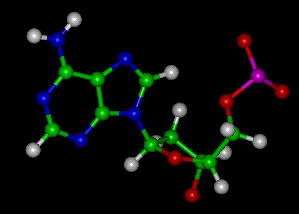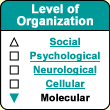|
|


Knowing that the body
releases adenosine continuously when a person is awake, some
researchers claim that caffeine would be more effective if
people took it in small doses throughout the day, rather
than in large amounts at a particular time of day (for example,
by drinking several cups of coffee at breakfast).
|
|
|
| MOLECULES THAT BUILD UP AND MAKE YOU SLEEP |
|
Research indicates that
for someone to be able to fall asleep, two bodily processes
must be properly synchronized. The first is the circadian rhythm,
which has a 24-hour period and is governed by your body’s
biological clock. The circadian rhythm controls the cyclical
secretion of several hormones, including melatonin, that are
involved in sleep. The second process is the accumulation of
hypnogenic substances in your body for 16 hours every day.
These substances induce a desire to sleep that does not go
away until you in fact get some sleep.
Thus you can fall asleep only when two conditions have been
met: your body’s
biological clock must have brought it into a hormonal balance
conducive to sleep, and it must have been a good while since
you last slept, so that your levels of hypnogenic substances
have built up sufficiently.
| The hypnogenic substance
that has been the subject of the most research is adenosine,
a small molecule that acts as a neuromodulator in
a great many synapses in the brain. In order to stay awake
longer, people have long consumed naturally occurring antagonists
to the brain’s adenosine receptors. Both the caffeine
in coffee and the theophylline in tea are examples of such
adenosine antagonists and are well known for their stimulant
effects. |

Diagram of an adenosine
molecule
(Atoms: green = carbon, blue = nitrogen,
red = oxygen, white = hydrogen,
pink = phosphorus)
|
It was in the early 1980s that scientists first discovered the
chemical mechanism by which drinking coffee helps people to stay
awake: caffeine, the psychoactive substance in coffee, prevents
adenosine from binding to certain neurons in the brain.
Once this discovery was made, adenosine became a subject of interest
for more and more neurobiologists who were doing sleep research.
Numerous animal experiments eventually confirmed that adenosine
definitely plays a role in the sleep/wake
cycle. Some of the experimental findings that led to this conclusion:
a) blocking the effects of adenosine made animals more alert; b)
injecting animals with an adenosine agonist caused them to fall
asleep; c) in certain parts of the brain, the concentration
of adenosine normally increases naturally during the day and decreases
at night, but if animals are forced to stay awake at night, this
concentration keeps increasing.
These experiments thus showed that adenosine, along
with other chemicals such as serotonin and melatonin, is
one of the molecules whose concentration in the brain influences
the onset of sleep.
But how exactly does adenosine exert this influence? During periods
of wakefulness, neuronal
activity increases the concentration of adenosine, which has
an inhibitory effect on a great many neurons. Among these are the
neurons of the hormonal systems that are the most active when we
are awake: the norepinephrine,
acetylcholine, and serotonin systems. Experiments have shown,
for example, that when the levels of adenosine in the basal
telencephalon are raised artificially, the neurons in this
structure that project axons throughout the cortex produce less
acetylcholine. As a result, cortical activity slows, and the individual
falls asleep.
The
synchronized brain activity characteristic of non-REM sleep can
then become established. But once non-REM sleep has continued
for a while, the adenosine levels begin to decline. The systems
responsible for wakefulness can then start becoming more active,
causing the individual to awaken and the cycle to begin all over
again. Thus we see that the sleep/wake cycle involves a highly
efficient negative feedback loop (for more on feedback loops
and cybernetics, follow the Tool module link to the left).
|
|





